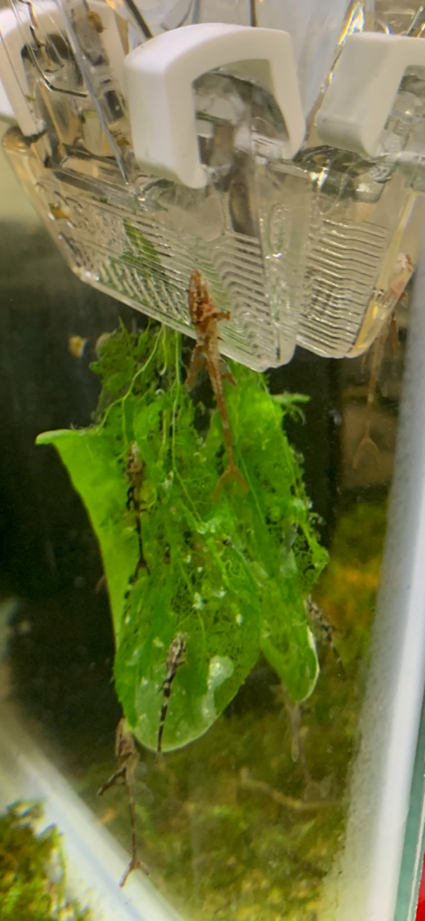Article by Dave McKane
Spawning report for Rineloricaria sp. (L010A) Red Lizard Whiptail Catfish
Tank Specs:
Ph: 7.2
Temp: 81.5° F
Tank: 30 Gallon Breeder
Equipment: Aquaclear 70, Sponge Filters with a pump for flow
Decorations: black gravel substrate, rocks, live plants (2), driftwood, Bamboo caves, slate caves
Other fish present: 2 Homaloptera orthogoniata (Saddleback Hillstream Loach) and 6 Peckoltia compta – L134 (Leopard Frog Plecos)
Six individuals were acquired on 5/13/2020 from Aquatic Arts in the juvenile stage (half grown). On 11/2/2020 the first clutch of eggs appeared in a bamboo cave with the male attending them and hatched 11 days later. A couple of days prior to hatching, I moved the cave with dad and the eggs into a 5 gallon tank with a sponge filter and heater. Thirty-five fry were counted after hatching. I tried to rear them using the same successful approach that I used spawning Sturisoma panamense (Royal Farlowella) catfish since they appear to be roughly the same shape, although smaller in size. This involved going down to the local pond and grabbing submerged leaf litter and some moss. This soup contained lots of tiny animals suitable for eating. I learned that it didn’t work when all died. The next spawn caught me off guard and hatched into the 30 gallon tank. Once again, all lost. The third spawn I caught and tried to rear with various foods for fry, once again losing all.
The 4th spawn (24 counted) went a little better. I was given advice from a salesperson at The Reef to try Christmas moss because it would contain some infusoria. I don’t know about the infusoria, but it did contain a snail. I’ll mention it again later.
I bought some Bug Bites Spirulina flakes and crushed them into a powder. I sprinkled this into the tank and then swished it around until it formed a cloud. It landed onto the Christmas moss and the fry started grazing on the moss and consuming the powder. I also always provided a spinach leaf hanging on the side of the tank. As they got older, they started eating this. Finally, success…kind of.
Back to the snail. A snail showed up with the Christmas moss. It had a ravenous appetite and grew quickly. Constantly on the move. It would even hang from its tail and skim the surface of the water for the crushed Spirulina powder. The whole time I’ve had these fry, I’ve found only two dead ones even though their numbers were steadily declining. As of this writing, I’m down to 5 fry. One night in while in bed I was contemplating whether or not I would have enough fry to submit for this BAP, I wondered if the snail was killing my fry in the night while they rested. The snail did a great job cleaning up the tank, but maybe too good. I got up and dispatched it immediately.
My takeaways:
- Fish that are similar, are not always the same and require a different approach.
- Not everything eats live food
- While I have no proof, watch out for snails around slow-moving fry.
- Males develop a (furry) face, so this type of fish is dimorphic.
- Christmas moss was the main key to success.